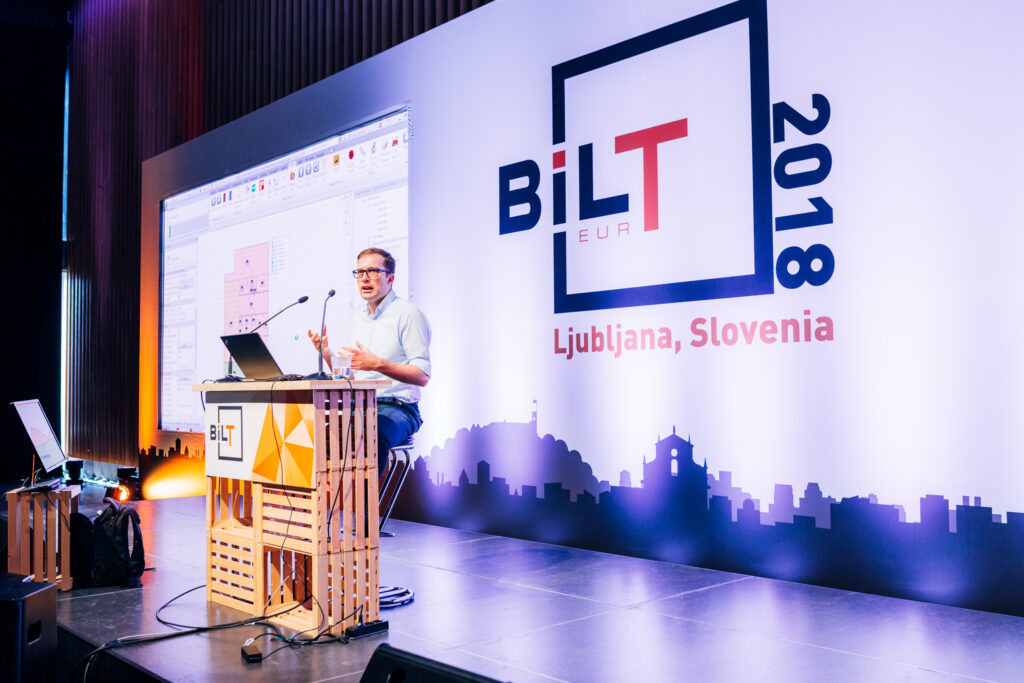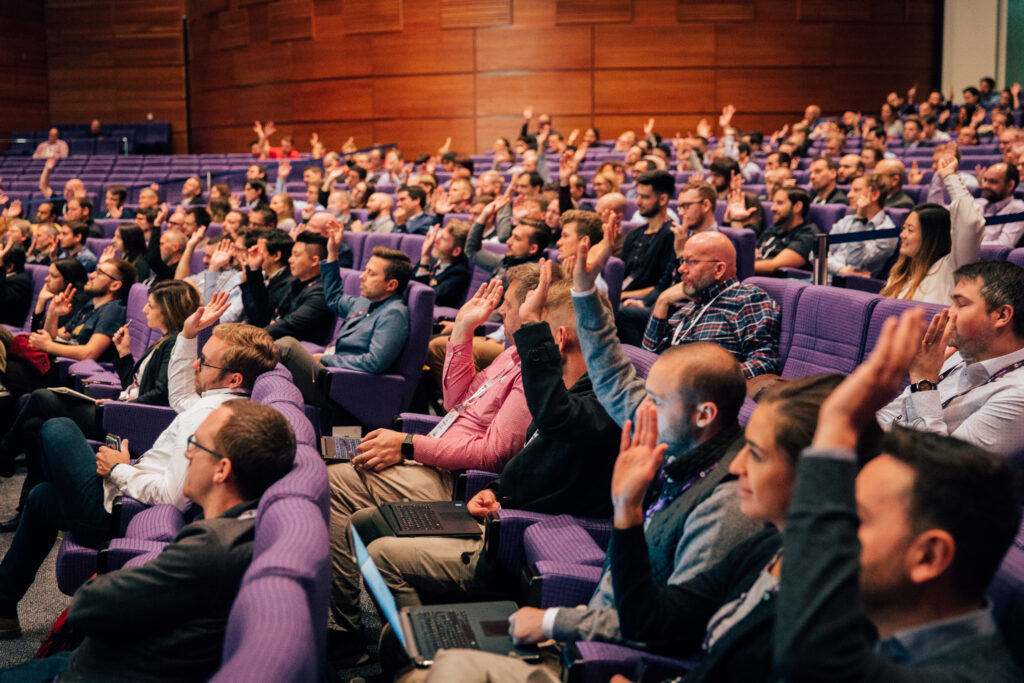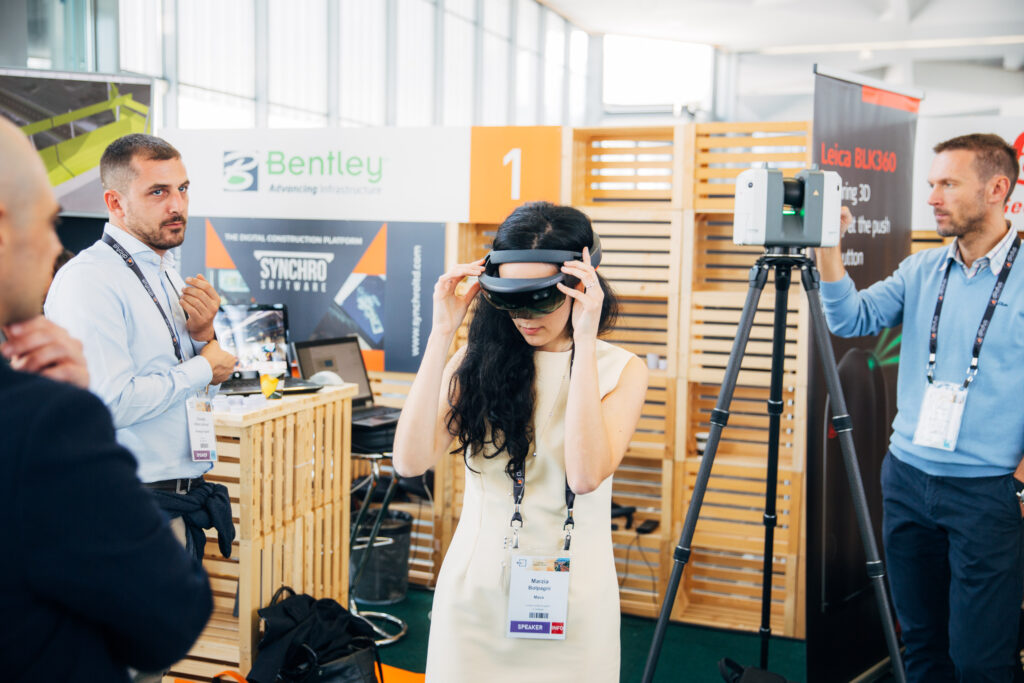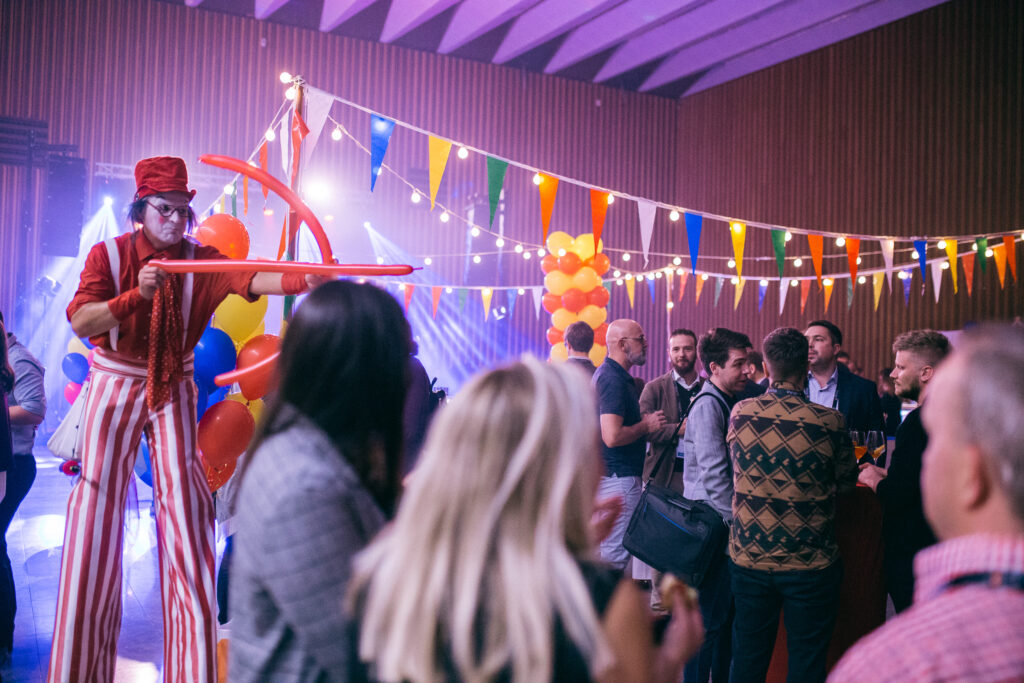If you are into conferences, you must have heard about BILT. This is THE conference. THE event to be at.
And if you are not often on conferences or by some accident haven’t heard about it I want to present to you what BILT is and why this is probably the best BIM conference in Europe.
What is BILT?
BILT stands for Buildings, Infrastructure, Lifecycle, Technology and this name encompasses exactly what this event is about. The event is run by users for users which makes it the best place to get real advice from people who seriously know their stuff, yet continue to learn themselves.
Organised by DBEI – a non-profit organisation that recently went into collaboration with BuildingSMART International. The organisation itself was started by technology passionates and up until today is run by such people. You can read about DBEI history here.
How does BILT ensure the highest presentation quality?
75 to 150 minutes presentation
It is long. The time allotted for one presentation allows for a deep exploration of a presented subject. It is demanding both for the presenter and the audience. (God I remember those boooring lectures at the university!).
Over an hour of talking is way too long to just glide through the subject’s surface – a presenter has to dive deeper showcasing why, how and what he or she has been working on.
On the other hand, it also requires a long attention span from the audience – if you have chosen to attend a session, you have to have a genuine interest in the subject. Otherwise, the venue offers many other possibilities to spend one hour of your life.
Those two aspects meet – there is a competition between the sessions. There are five parallel sessions, so presenters have to make a good first impression to draw the attention of the listeners. If the presenter delivered an absorbing topic that was enjoyably presented, he or she would receive positive feedback and a higher score in the event app. There is a ranking of presentations and the 10 best presenters receive additional recognition by being promoted by DBEI after the event.
Schedule and preparation long before the event
Another measure to improve the quality of the presentations is the delivery schedule. It is both long and tight at the same time!
The submission deadline is more than half a year before the event (this year – November 2023). Thereafter, the jury chooses speakers by blind review of the received submissions to avoid being biased by names or companies the speakers represent. Being chosen is not the end, merely a beginning!
Two months before the presentation speakers have to deliver a session outline with a predicted timeline. This is to ensure that the session is well structured and thought through.
Consequently, three weeks before the event everything has to be ready. Forget about last-minute work and staying up three nights before the event to finish the slide deck! The delivery deadline applies to all materials.
This is the next upvote for the event quality.
Rich hand-outs and tips & tricks
The materials delivered by the speakers are extensive. Every speaker has to prepare two documents in addition to the presentation:
- Hand-outs – this is a session guidance that comprises what the speaker is going to talk about. The attendees receive a printed copy at the entrance so that they can track the progress of the presentation and make notes.
- Tips & tricks – three or more tips from the speaker. Some practical take-away from the presentation that can be used in everyday work
Creating these documents is not an easy task, yet gives immense value to the attendees. Many times during different events I wanted to simultaneously keep track of what was being said, make notes and also take pictures of some graphs from the slide. Too many tasks at once made it impossible to organise my notes! By having a handout I could focus on the content and just make short notes on the side.
I have also heard that many attendees keep and review their printed copies for years after the event!
Mentor program for speakers
This year’s novum! A mentor program for fresh speakers at BILT. Each new speaker gets allocated one mentor who can answer all their questions about the event, presentation and whatever they need.
I find it helpful and comforting to have the possibility to exchange my thoughts and ask questions about the event, the audience and the vibe before delivering the presentation.




My favorite sessions at BILT 2024 conference
I have studied the schedule along and across and I have chosen the topics that interest me the most. Here is my list of sessions I’m definitely going to attend. If you want to find your own set, head straight to: https://bilteur2024.dekon.com.tr/schedule/
Data Analytics in the AEC - Stories of the past 4 years.
Konrad Sobon
Interoperability Workflows at Autodesk
Lejla Secerbegovic, Krzysztof Jedrzejewski and Luca Marzi
In my day-to-day duties, I often use Autodesk products and work with IFC files. Would love to hear what is new about in integration of open standards within Autodesk’s ecosystem
Next-Level Data Viz: Taking Project Analysis to New Heights with Speckle & PowerBI
Kevin Fielding
Harnessing AI for Historic Asset Analysis & Real-time Sensory Integration for Maintenance
Valentin Noves
Optimizing Construction Schedules with Data Analytics
Pablo Derendinger
A journey from 0 to 2.5M sqm in a year
Lucia Munoz
This session is about a building owner’s journey from having no BIM knowledge to managing more than 2.5M sqm in BIM in a year. Sounds promising to see a case study on how an organisation can develop their digitalisation and what they have gained through the implementation of BIM methodology.
Sessions 5 and 6 are killing me! They are at the same time! Both sound extremely interesting. Maybe I can copy myself to attend both…
An Engaging Domestic Asset Information Model in Notion
Thomas Corries
Thomas is another experienced BILT speaker. We had a chance to talk since Thomas also takes part in a mentor program and he is my mentor for my speech.
I have tested Notion a bit and it looked like a very capable tool. I would love to learn how to set it up to draw together data from different sources and how to maintain this platform to be always up to date.
Implementing AI in Revit for Construction Code Verification
Valentin Noves
How to succeed in building an 8 km subway with 6 stations directly from BIM.
Magne Ganz
The giant subway project in Oslo – Fornebubanen – is going to be the topic of this presentation. I have already seen some presentations about this construction investment and they are always impressive (check for example this one at Autodesk University). Magne is a knowledgeable person and openly shares his knowledge. I am sure this session is going to be a star!
My contribution to BILT
$1 Billion Project Built Fully Without Drawings
Konrad Fugas




Summary
I think you understand now why BILT is such a big thing in our bubble. If you want to deepen and expand your knowledge within the BIM methodology, this is the event to be at!
Sincerely, if you have a budget to visit only one conference this year, make it to BILT! Register as long as there are seats available! You can do it here:
P.S. This article is NOT sponsored. I just genuinely recommend the BILT conference 🙂








